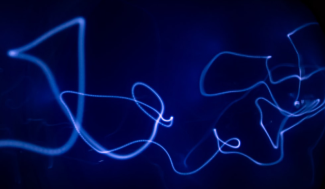Dystonia cannot be cured, but it can be treated! Significant progress has been made in recent years in the treatment of this condition to alleviate or even eliminate spasms and their impact on patients’ daily lives.
Drug Treatments
In cases of dystonia resulting from medication, it is possible to find alternative treatments for psychosis or nausea quickly while treating the residual effects of the previous treatment on the spasms.
In cases of dopa-responsive dystonia, spasms are significantly reduced by drugs that restore dopamine levels in the brain.
Patients suffering from focal or segmental dystonia are treated with local injections of botulinum toxin into the muscles affected by involuntary contractions.
Botulinum toxin works by locally reducing muscle contraction without affecting nerve transmission. For optimal effectiveness, injections should be repeated regularly (every few months). Physical therapy can enhance the beneficial effects of botulinum toxin injections in some cases.
In the case of generalized dystonia, treatment is based on anticholinergic drugs. These molecules reduce spasms by blocking messages sent from neurons to muscles. As the side effects of these treatments can be severe for patients, there is an alternative therapy in the form of a mild sedative combined with a muscle relaxant (myorelaxant).
In some severe forms of dystonia, transcranial magnetic stimulation or deep brain stimulation (DBS) may be necessary.
The therapeutic principle behind these technologies is based on sending electrical or magnetic stimuli to the affected areas of the brain in order to restore their function. Deep brain stimulation involves implanting an electrode in the patient’s brain to electrically stimulate specific areas deep within the brain.
Transcranial magnetic stimulation is a non-invasive technique that involves applying a magnetic field to the surface of the skull to modulate the activity of more superficial structures such as the cortex or cerebellum.
In some very rare cases, surgical removal of the globus pallidus (a region of the basal ganglia in the brain) may be indicated.
At Paris Brain Institute
The search for new therapeutic solutions and new targets for brain stimulation is the focus of the research conducted by Marie Vidailhet and Stéphane Lehéricy’s team, in collaboration with the reference center at Pitié-Salpêtrière Hospital (AP-HP).
- A team coordinated by Professor Emmanuel Flamand-Roze of Pitié-Salpêtrière Hospital (AP-HP), a researcher at Paris Brain Institute, tested the efficacy of zonisamide, a drug currently used to treat certain forms of epilepsy, in 23 patients with myoclonic dystonia. Find out more: https://parisbraininstitute.org/news/effective-drug-against-myoclonic-dystonia-rare-disease-nervous-system
- A study conducted by Zuzana Kozutska, winner of the Clinical Research Fellow grant from Paris Brain Institute, working as part of Marie Vidailhet and Stéphane Lehéricy’s team, has demonstrated the long-term benefits (more than 10 years of follow-up) of deep brain stimulation in the internal globus pallidus, a structure of the basal ganglia, in a specific form of dystonia known as myoclonus dystonia, providing an excellent improvement in motor function and social adaptation. Find out more: https://institutducerveau-icm.org/fr/actualite/stimulation-cerebrale-profonde-dystonie-myoclonique/. The teams at Paris Brain Institute, in collaboration with the CENIR core facility at the Institute’s Neuroimaging Center, are pioneers in the use and development of transcranial magnetic stimulation.

